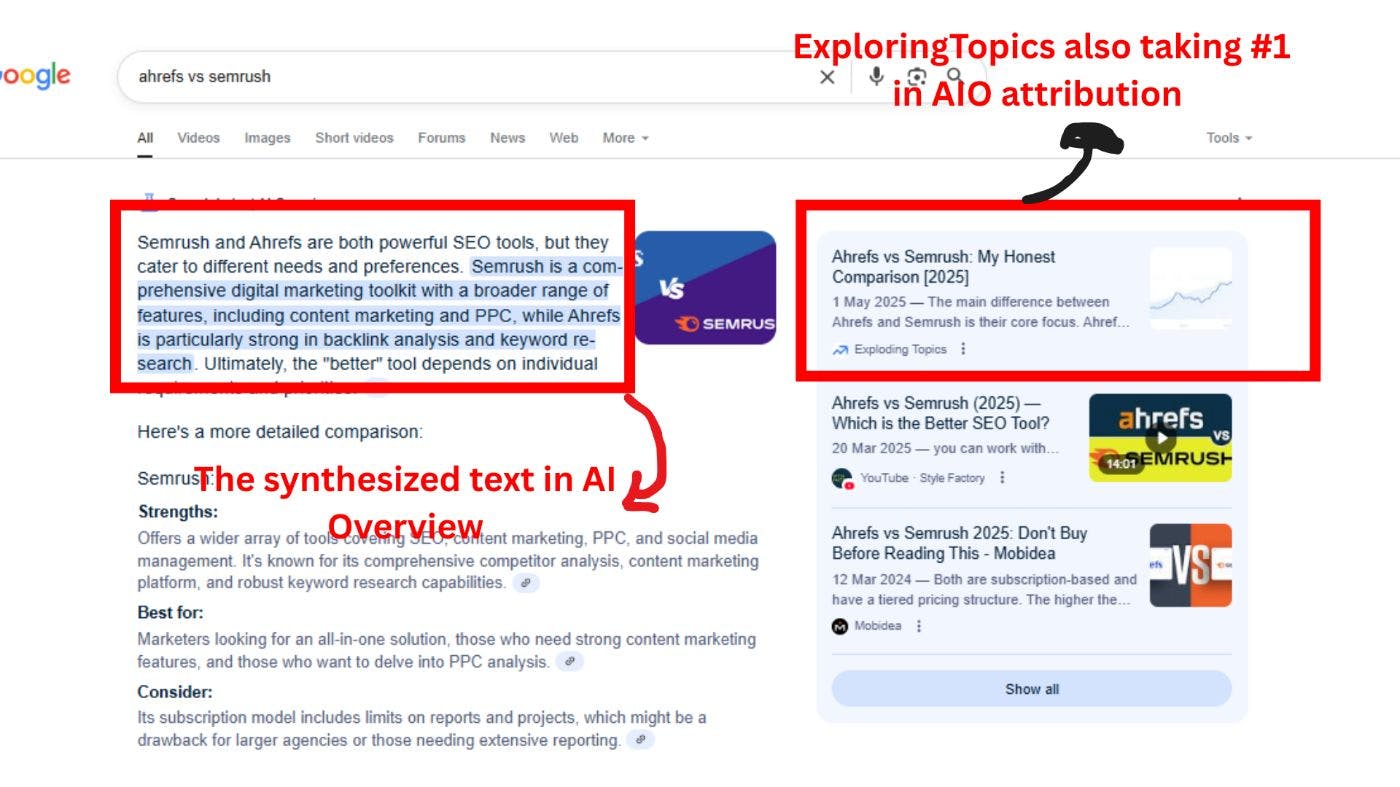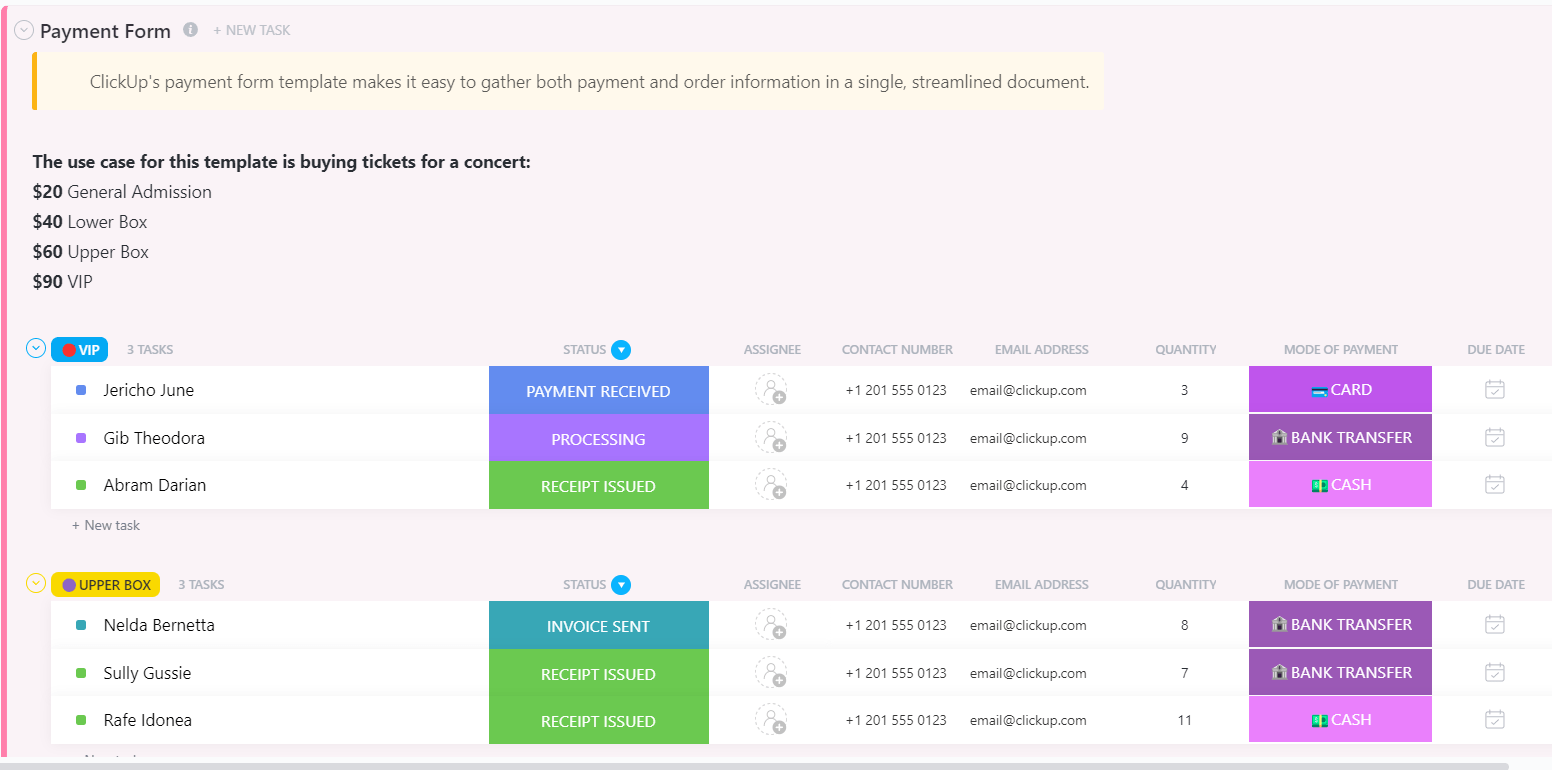In May 2024, Google rolled out a major update that disturbed the still waters of the SEO and content marketing community: the AI Overview (AIO).
As if that weren’t disruptive enough, during Google I/O this May, they announced the launch of a more comprehensive AI-powered search experience for all U.S. users. Enter AI Mode.
As always, the fear merchants resumed their familiar “SEO is dead” chants. While I understand their fears—especially given that the initial AIO rollout reduced click-through-rates (CTR) by 34.5%—panic isn’t the best course of action.
This sophisticated update signals that the traditional SEO playbook has expired. It’s time to go back to the drawing board.
This article is a step toward finding a way around this nascent era. You’ll learn how AI Mode works, how it changes search, and, most importantly, what you must do differently to stay relevant.
What is Google’s AI Mode?
The Google patent titled “Search with Stateful Chat” reveals how this system works. It transforms search from a static input-output experience into something more conversational, memory-based, and personalized.
Understanding this system is important because it determines whether your content gets seen, cited, or ignored entirely.
The image in Fig. 1.0 is a flowchart illustrating how Google’s AI Mode generates an AI-mediated search experience.
When users activate AI Mode, the search engine follows a multi-step process: it receives the query, retrieves relevant documents from its index, and generates a synthesized response.
Here’s how document selection works behind the scenes: Google’s search engine queries its inverted indexes and document corpus to select results based on three key signals:
- Query-dependent signals (semantic similarity)
- Query-independent signals (the quality of the documents)
- User-dependent signals (user behavior patterns, past clicks, and location)
Next, the system identifies documents that match both the original query and semantically related concepts.
Here’s how semantic matching works: if you search for “AI in education,” the system doesn’t just look for exact keyword matches. Instead, it identifies semantically related content, such as “AI school impact,” “machine learning classrooms,” or “educational technology benefits.” This is possible because Google converts all content into mathematical representations called vector embeddings, which capture meaning rather than just matching specific words.
The system also considers your search context, your recent searches, common follow-up queries for this topic, and what the AI predicts you’ll need next. This means two people searching “AI in education” might see different results based on their search journeys.
While this improves the user search experience, it creates challenges for content creators: AI Mode synthesizes information from multiple sources into a single response, often with limited attribution. The system selectively cites sources, and users get their answers without having to click through to the original websites.
This heralds an era of zero-click search, where users can receive answers directly in search results rather than visiting source websites. This change in search behavior has a significant impact on website traffic.
That’s just the tip of the iceberg. Here’s everything AI Mode entails:
Memory-based personalization
Unlike traditional search, which treats each user query independently, AI Mode creates contextual results. Every synthesized result builds on:
- What you’re currently searching
- How the system interprets your query intent
- Your search history, location, and behavioral patterns
This memory-based approach allows Google to provide contextualized results that better match perceived search intent.
Here’s the difference: In traditional search, searching “best remote jobs” and later “best remote jobs for creatives” produces two completely separate result sets. Each search starts from scratch.
With AI Mode, if you search “best remote jobs for creatives” and a week later type “tools I need,” Google may infer you mean “tools for remote creative work,” connecting your searches into an ongoing conversation.
This creates a situation where two users in the same location may ask similar questions and receive completely different answers.
For SEOs, this means ranking is now contextual and harder to predict. You can’t track how your content appears to different users, and you must consider how your content fits into longer search conversations, not just individual queries.
Beyond that, this personalization may create an echo chamber effect for the users. Search stops being a distribution point for diverse content and becomes a channel that reinforces pre-existing preferences. This also makes it harder for creators to reach new audiences.
Probabilistic ranking
With AI Mode in play, SEO now means that you’re “ competing against invincible searches**,”** as John Iwuozor aptly puts it. Query results will not appear as the regular blue links optimized for literal search.
Now, results are probabilistic, meaning that in the background, the system runs multiple related searches you never actually typed to generate a summarized response.
This is made possible by the query fan-out technique, where the system breaks down your original query into several sub-related queries. It then synthesizes information from multiple paths into a single, comprehensive response.
To ensure your content appears in AI-generated responses, SEO isn’t just optimizing for specific keywords. However, citation in AI Mode is less predictable, as the system evaluates how your content fits into a user’s broader search context and information need, rather than just matching specific query terms.
Content may now appear in AI responses for queries you never directly targeted, while perfectly optimized pages might be overlooked if they don’t align with the AI’s interpretation of user intent.
Multimodal capabilities
AI Mode expands beyond text-only search results by synthesizing information from multiple content formats—including blogs, videos, images, podcasts, and interactive content—into comprehensive responses.
The system draws data from diverse sources, including Google Business Profiles, Knowledge Graph, Shopping Graph, and Google Maps, to create richer and more complete answers. For example, a search about “home renovation costs” might combine data from blog posts, YouTube videos, local contractor listings, and recent shopping prices.
Content that provides multiple formats to answer a particular query will consistently outperform content presented solely as plain text.
Designed to keep you in AI Mode
Google’s AI Mode isn’t just another search feature. It’s designed to become the primary way people search. I came across Lily Ray’s LinkedIn post that captures my thoughts on how AI Mode is built in ways to keep users within the Google ecosystem rather than clicking through to external websites.
Plus, this innovation is part of Google’s goal to make “Google do the search for you” positioning AI Mode as the future core of the search experience.
How do I know this? The signs clearly point in this direction.
First, we have to note how the interface already encourages users to stay within the AI Mode rather than switching back to the traditional search tab.
What Lily Ray documented also explains this: those “dotted links” and “naked links” that keep users within Google properties, embedded Google Business Profile pages instead of direct website links, and AI Mode’s struggle to generate external clickable links. They’re not mistakes; they’re features designed to retain users.
Google is also trying to reduce what Andrei Broder and Preston McAfee described as “Delphic costs.” Simply, Google is trying to reduce the physical and cognitive loads users experience navigating external websites to find information. By providing answers directly, Google makes the search experience quicker and more efficient for the user. AI Mode is the answer.
Considering their success with the AI Overview, they’re not backing down. Liz Reid, VP and Head of Search, also described it as the “future of search.”
The real question now is, how do we adapt to serve this agentic system that is rapidly becoming the default?
Generative information retrieval
Lexical search methods, which rely heavily on keyword matching and frequency (TF-IDF/BM25), are being phased out by more sophisticated approaches in Google’s AI Mode. This new system is built on semantic search, which focuses on understanding the searcher’s intent rather than just matching literal words.
This shift is powered by Generative Information Retrieval (IR). Unlike sparse retrieval techniques that depend on surface-level keyword matching, generative IR builds on dense retrieval, which represents both queries and documents as vectors (embeddings). Allowing Google to match meaning, not just words, when generating answers.
The implications for content creators are significant. In traditional search, your webpage ranks and gets traffic. In AI Mode, your content may contribute to answers without generating direct traffic to your site. Google pulls information from multiple sources, combines it, and presents it as a single, authoritative response.
This also creates a shift from “retrieve and rank” to “understand and generate.” Visibility becomes less predictable, and success depends not just on keyword relevance but on how well your content fits the AI’s interpretation of user intent and context.
Passage-level granularity
Building on generative IR, Google’s AI Mode operates with passage-level granularity. This means that Google no longer treats your webpage as one big chunk. Instead, it breaks it down into smaller units to parse, understand, and select which parts match a user’s query.
This shifts from traditional document-level relevance to passage-level relevance, where even a small section of your content can be retrieved, cited, or summarized in AI responses.
What does this mean for content creators?
- Even if your full page doesn’t rank highly in classic search, a single well-optimized paragraph might appear in AI Mode’s answer.
- A high-quality passage that nails user intent can outperform an entire page that’s broadly relevant but less specific.
- Zero-click visibility becomes more common, much like how Google’s AI Overview offers source links, but users rarely click through to read the full content.
In essence, your SEO strategy now needs to optimize not just pages, but individual passages, because that’s what the model sees, understands, and serves to users.
How to Build Your Content Strategy for Google’s AI Mode
To begin, it’s understandably overwhelming for content-led brands that rely on clicks for visibility. However, the first step in light of these changes is a re-evaluation of success metrics by stakeholders and teams. For so long, we’ve relied on traffic as a key success indicator, but in a world built on zero-click consumption, internally redefining content success metrics becomes crucial.
Plus, we shouldn’t view these traditional metrics as the sole purpose of content. After all, our content is meant to attract and guide customers along their journey, so quality content is still very much needed, just measured differently.
That said, here’s how to structure your SEO and content strategy to stay relevant in Google’s AI Mode era:
Multimodal strategy for a multimodal system
One of the major highlights of Google’s AI Mode is that it retrieves information from a variety of data sources and content formats. It can extract insights from a blog, synthesize relevant audio clips, pull soundbites from videos, or use images that serve the query intent.
This diverse information retrieval capability brings to mind Marshall McLuhan’s famous insight: “The medium is the message”. In this new world, the format is as relevant as the content itself. Content teams need to start thinking in this direction.
How to implement a multimodal strategy:
- Create multi-format content across all your channels
- Repurpose video and audio content into blog posts (and vice versa)
- Write descriptive, intent-rich alt text for all images
- Use detailed social media captions that clearly describe your content when distributing across platforms
When your content exists in multiple formats, you’re essentially giving AI systems multiple entry points to discover, understand, and recommend your expertise.
Develop content upgrades to attract and engage visitors
In an AI-driven search world, giving users a reason to click and stay on your site is more important than ever. One practical way to do this is through content upgrades. These are downloadable resources tied to specific blog posts, landing pages, or thought leadership pieces.
These upgrades serve as incentives, offering visitors immediate value in exchange for their clicks and engagement. Think: checklists, templates, swipe files, quizzes, audio guides, and interactive tools, among other things.
For example, if you’re writing a thought leadership post for startups, you could offer a downloadable decision matrix to help them take action. This works because while AI can generate general advice, it’s hard to replicate expert-crafted tools that are personalized and practical.
The payoff? These upgrades double as lead magnets to grow your email list and nurture subscribers through their buyer’s journey. This email list also creates a new content distribution channel outside of search alone.
In short: give people a reason to connect beyond the first click, and you’ll stay visible even in a zero-click world.
How to signal value in AI Mode:
- Include upgrade mentions in your content’s opening paragraphs
- Use clear calls-to-action throughout your content. Example: “Download the startup decision matrix at the end of this post.”
- Reference your upgrades in meta descriptions and title tags
- Mention exclusive resources in your social media posts when sharing content
- Create compelling preview snippets that hint at additional value
Address commercial intent with targeted Bottom-of-Funnel (BoFu) content
More often than not, when people use AI for commercial searches, they’re in their decision stage. While content marketing supposedly “isn’t meant to sell,” treading too carefully may hurt how your content contributes to your bottom line. This doesn’t mean every piece should be overly salesy or promotional, but it does mean being strategic about winning commercial intent queries.
The key is addressing commercial intent queries with targeted BoFu content. Here’s how:
- Create comprehensive comparison content that addresses every angle of differentiation from your competitors. Go beyond the typical “best tool for X” to compare across the full spectrum: “alternative to [competitor],” “X vs Y for [specific use case],” “[tool] for [industry/size].”
- Reinforce your brand USP consistently throughout comparison content—don’t just list features, highlight what makes you uniquely valuable
- Weave in location-specific benefits if your product has geographic advantages or limitations
- Build a hub of comprehensive case studies showing real results. People want proof, and AI systems synthesize testimonials and success stories when making recommendations
- Create content that addresses competitive migration. For example: “Switching from [competitor] to [your product]” migration guides
- Include clear differentiation summaries in every comparison piece. This makes it easy for both humans and AI to understand what sets each option apart
For example, Ahrefs and SEMrush are direct competitors, but they have distinct differences. This article by explodingtopics.com currently ranks #2 on SERPs and gets featured in AI overviews specifically because it highlights key differentiators concisely.
While correlation isn’t causation, the pattern is clear: AI systems favor content that clearly articulates competitive advantages.
Cover search intent comprehensively
According to Google’s Liz Reid, people are asking increasingly complex and longer questions. This means Google’s system must analyze each complex query by breaking it down into semantic segments before generating answers.
For example, this is what the shift in search behavior may look like: Traditional search: “email marketing tips” AI Mode search: “How can an e-commerce store selling handmade jewelry increase email open rates for their weekly newsletter when most subscribers are women aged 25-45 who primarily shop on mobile?”
The second query shows how users now expect search engines to understand context, specificity, and nuanced questions.
This type of complex query forces Google’s AI to “fan out” and provide a detailed answer that addresses multiple facets simultaneously: industry specifics, demographic targeting, platform optimization, and marketing tactics.
To compete effectively for these complex queries, your content must include:
- Specific contexts – Address particular industries, business sizes, or specific use cases
- Budget considerations – Include pricing ranges and cost-benefit analyses
- Technical requirements – Cover integrations, compatibility issues, and setup needs
- Audience demographics – Specify who the advice works best for
- Geographic factors – Include location-specific considerations when relevant
- Concrete examples and analogies to further paint the scenario and enable LLM integration
How to cover search intent for Google Query Fan-Out
- Map question hierarchies. For every primary topic, list 5-10 related questions your audience would ask. Create content that addresses these systematically, ensuring no aspect of user intent remains uncovered.
- Create comprehensive topic clusters. Structure your content to address an entire topic pillar, not just individual keywords. Cover the main topic, related subtopics, and connecting themes that users might explore.
- Build interconnected content pieces. Create content that references and links to related topics within your cluster.
- Use contextual modifiers. Instead of generic advice, specify “for small businesses,” “with limited budgets,” or “in Y industries.”
- Create decision frameworks. Help readers navigate complex choices with clear criteria and evaluation methods.
- Use semantic keyword variations. Include natural language variations and synonyms throughout your content.
- Include contextual transitions. Use phrases like “Additionally,” “Another consideration,” and “Related to this” to help AI systems understand how different sections connect.
To stay visible, your content must pre-empt and comprehensively cover every angle of user intent.
Create valuable content
Creating valuable content goes beyond the generic fluff that clutters much of the internet. It’s about producing content that genuinely helps your audience solve problems, make informed decisions, or achieve specific goals.
When you create value, you connect deeply with your audience and build trust and authority. You also signal to AI systems that your content deserves to be the primary source for user queries.
Here’s how to make your content valuable:
- Provide specific information on how to do something
Too many articles stop at surface-level advice like “know your audience” or “do research.” That’s not enough in today’s content landscape. Instead, you should:
-
Explain the actual steps with concrete detail (e.g., “Interview 5 existing customers using these 3 specific questions: What problem were you trying to solve? What alternatives did you consider? What made you choose our solution?”)
-
Break down information systematically using the 5Ws + H framework (Who, What, When, Where, Why, How) to ensure comprehensive coverage
-
Provide immediately applicable resources such as checklists, templates, or step-by-step examples that readers can implement right away
- Add Unique Perspective and Original Research
Differentiate your content by incorporating:
- First-hand insights from your direct experience or observations of industry trends that others might miss
- Original data collection through mini-surveys, polls, or experiments that provide fresh perspectives on common challenges
- Contrarian viewpoints or expert commentary that challenge conventional thinking and offer alternative solutions
- Case studies from your work or detailed analysis of successful (or failed) strategies in your industry
Final Thoughts
It’s clear that search is evolving, and ignoring this shift in your marketing strategy won’t just slow your business growth; it will trap you in the cycle of doing things the old way while expecting new results.
This isn’t some distant future we’re waiting for—it’s already here. It’s the reality.
To stay relevant, focus on:
• Creating content that serves both agentic search and human needs
• Delivering valuable content that truly connects with your customers
Arrivederci!










